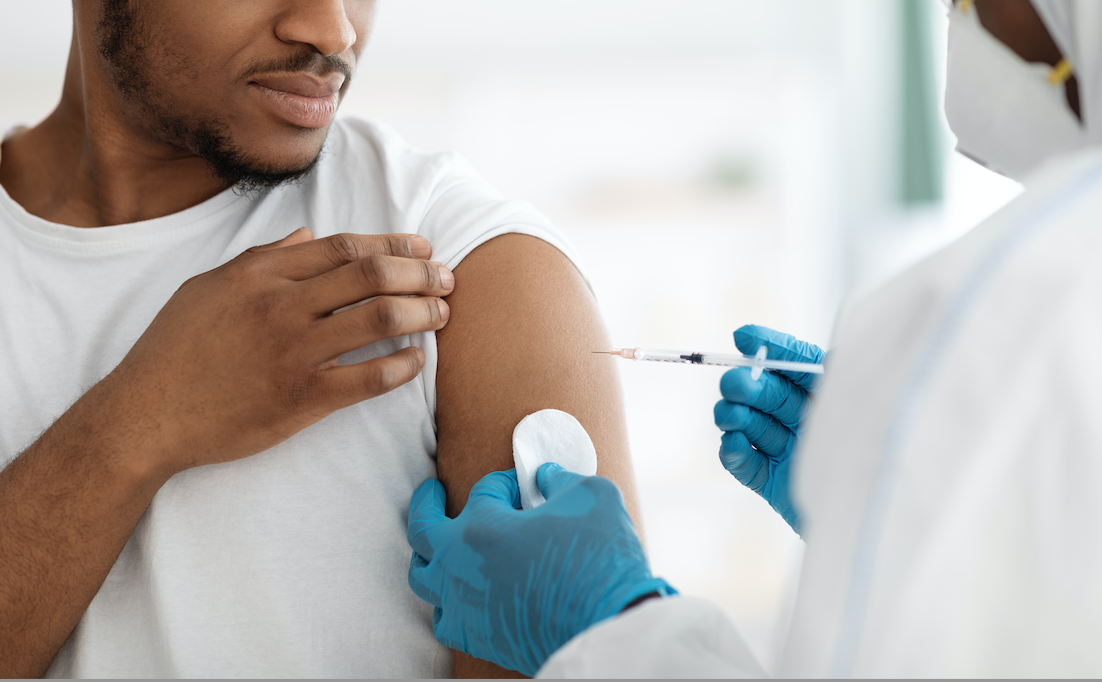What Do the Supreme Court’s Decisions on COVID-19 Vaccine Mandates Mean for the American Workforce?

On January 13, 2022, the U.S. Supreme Court struck down one federal COVID-19 vaccine mandate (on large employers) while leaving another (on federally funded healthcare facilities) intact. On balance, these decisions curb federal power to require vaccines and leave behind a patchwork of local, state, federal, and private vaccine regulations. This post summarizes the Court’s contrasting decisions and analyzes some of their impacts on American employers and employees.
The Court Prevents OSHA’s Mandate Covering Large Employers from Going Into Effect
In NFIB v. Department of Labor, certain states, businesses, trade groups, and nonprofit organizations sued to bar implementation of an emergency temporary standard issued by the Occupational Safety and Health Administration (OSHA ETS)1. The now defunct emergency standard required employers with at least 100 employees to create and enforce a mandatory COVID-19 vaccination policy or a policy requiring workers to get vaccinated or, in lieu of vaccination, undergo regular COVID-19 testing and wear a face mask at work.
In an unsigned majority opinion, the Court granted the petitioners’ request to stay the OSHA ETS, concluding that OSHA had exceeded its statutory authority by enacting a broad public health measure applicable to over 80 million employees across industries rather than a targeted workplace safety standard. The Court stressed that OSHA’s duty is to set occupational health and safety standards, and public health “falls outside of OSHA’s sphere of expertise.”2 The majority concluded that COVID-19 is not strictly an occupational hazard but rather a generally occurring risk akin to “crime, air pollution, or any number of communicable diseases.”3
The Court Upholds HHS Mandate for Workers in Federally Funded Healthcare Settings
In Biden v. Missouri, the federal government sought an emergency stay of injunctions barring enforcement of a vaccine mandate for all staff at healthcare facilities that participate in the Medicare and Medicaid programs. The Department of Health and Human Services (HHS), which administers Medicare and Medicaid, issued the interim rule establishing this mandate on November 5, 2021.4 The rule contains exemptions to the vaccine requirement for workers with medical or religious objections.
In contrast to the NFIB decision blocking the OSHA ETS, the Court permitted enforcement of the HHS interim rule.5 Examining the rule’s basis, the Court detailed the serious threat COVID-19 transmission from unvaccinated staff poses to Medicare and Medicaid patients, who are often elderly, disabled, or in poor health.6 The Court held that a core function of HHS is to regulate providers who care for Medicare and Medicaid patients, and thus the agency is authorized to establish detailed requirements to protect patient health and safety, like the rule at issue, which providers must satisfy in order to receive federal funds.
The Current COVID-Vaccine Regulation Landscape
Now that the Supreme Court has issued two contrasting opinions, and other lawsuits wind their way through the courts, what does the patchwork of COVID-19 vaccine regulations look like for employers and employees? The short answer is: it depends where you work.
- Private Employers.
- Soon after the Supreme Court’s NFIB decision, OSHA announced that it would formally withdraw its ETS and not pursue any further litigation related to it. In addition, some large employers (including Starbucks and General Electric) retracted their existing employee vaccination requirements.
- With the OSHA ETS blocked by the Court, employers are free to set their own standards for employee COVID-19 vaccinations as long as they adhere to state and local rules, which vary from mandating vaccines to banning vaccine mandates. OSHA may try to advance a version of the vaccine-or-test rule targeted at high-hazard industries (e.g., meatpacking) through its standard, rather than emergency, rulemaking process.7 If OSHA does issue such a rule, additional legal challenges would likely follow.
- Federally Funded Healthcare Facilities.
- Following the Court’s decision in Biden v. Missouri, the federal government issued interpretative guidance applying the HHS rule to Medicare- and Medicaid-funded facilities in the 24 states involved in that litigation. Federally funded healthcare facilities in these states must implement policies ensuring that all staff (regardless of clinical responsibility or patient contact) are vaccinated for COVID-19 and receive at least one vaccine dose or apply for an exemption [Phase 1] by February 14, 2022, and are fully vaccinated8 or designated exempt [Phase 2] by March 15, 2022. On February 4, a 16-state coalition, led by Louisiana, requested leave to file a new complaint in the U.S. District Court for the Western District of Louisiana to stop enforcement of the rule before the deadline for Phase 1 compliance.9 It remains to be seen whether this lawsuit will affect the deadlines for these 16 states.
- Covered facilities in twenty-five other states and the District of Columbia must abide by the original January 27, 2022 compliance deadline for Phase 1 and February 28, 2022 deadline for Phase 2.
- In Texas, which brought its own (now dismissed) lawsuit challenging the healthcare mandate, covered facilities must comply with Phase 1 by February 22, 2022 and Phase 2 by March 21, 2022.
- Federal Employees. Executive Order 14043 established a vaccine requirement for all federal executive agency employees. On January 21, 2022, a federal district court in Texas issued a nationwide preliminary injunction, precluding implementation and enforcement of Executive Order 14043. The court found that requiring federal workers to “undergo a medical procedure as a condition of their employment” was “under the current state of law as just recently expressed by the Supreme Court…a bridge too far,” in a reference to the Supreme Court’s decision on the OSHA ETS.10 On January 24, 2022, the Safer Federal Workforce Task Force (SFWTF) issued updated FAQs stating that the federal government would take no action to implement or enforce the vaccination requirement under Executive Order 14043 while the nationwide preliminary injunction remains in place. The federal government has appealed the court’s ruling to the Fifth Circuit.
- Federal Contractors. Executive Order 14042 directed the SFWTF to establish COVID-19 safeguards, including a vaccination requirement,11 which federal contractors entering into contracts with executive agencies would be required to follow. In November 2021, the SFWTF issued revised guidance on this “contractor mandate.” The federal contractor mandate has been enjoined by various district courts, including one nationwide injunction.12 In light of the ongoing litigation, the SFWTF stated that it would not enforce the contractor mandate where the place of contract performance is “the United States and its outlying areas.” The federal government’s appeals of these rulings will be heard in various circuit courts this spring.
1 86 Fed Reg. 61402 (2021).
2 NFIB v. OSHA, 595 U.S. ----, 142. S. Ct. 661, 665 (2022).
3 Id.
4 86 Fed. Reg. 61555 (2021).
5 The Court stayed the preliminary injunctions and permitted the HHS mandate to go into effect pending disposition on the merits in the lower courts
6 Biden v. Missouri, 595 U.S. ----, 142 S. Ct. 647, 651 (2022).
7 In its January 25, 2022 statement, OSHA was careful to note that it was withdrawing the ETS “as an enforceable temporary standard” but that it was “not withdrawing the ETS as a proposed rule,” meaning that it may use the standard rulemaking process for the vaccine-or-test rule.
8 Staff are considered “fully vaccinated” two weeks after either the administration of a single-dose vaccine (such as Johnson & Johnson), or the administration of all required doses of a multi-dose vaccine (such as the Pfizer-BioNTech or Moderna).
9 See Louisiana v. Becerra, No. 3:21-cv-03970, ECF Nos. 51 (W.D. La. Feb. 4, 2022).
10 Feds for Medical Freedom v. Biden, No. 3:21-cv-356, 2022 WL 188329, at *1 (S.D. Tex. Jan. 21, 2022). The Fifth Circuit Court of Appeals denied the government’s request to stay the injunction pending appeal. See Feds for Medical Freedom v. Biden, No. 22-40043, Doc. 00516197133 (5th Cir. Feb. 9, 2022).
11 The vaccination requirements in both Executive Orders 14042 and 14043 are subject to exceptions in limited circumstances where an accommodation is required by federal law.
12 Georgia v. Biden, No. 1:21-cv-163, 2022 WL 266186 (S.D. Ga. Jan. 21, 2022).
Information provided on InsightZS should not be considered legal advice and expressed views are those of the authors alone. Readers should seek specific legal guidance before acting in any particular circumstance.
Author(s)
Zuckerman Spaeder Team
InsightZS Contributor
Email |
As the regulatory and business environments in which our clients operate grow increasingly complex, we identify and offer perspectives on significant legal developments affecting businesses, organizations, and individuals. Each post aims to address timely issues and trends by evaluating impactful decisions, sharing observations of key enforcement changes, or distilling best practices drawn from experience. InsightZS also features personal interest pieces about the impact of our legal work in our communities and about associate life at Zuckerman Spaeder.
Information provided on InsightZS should not be considered legal advice and expressed views are those of the authors alone. Readers should seek specific legal guidance before acting in any particular circumstance.




